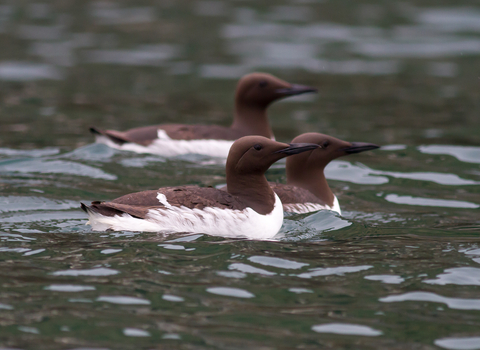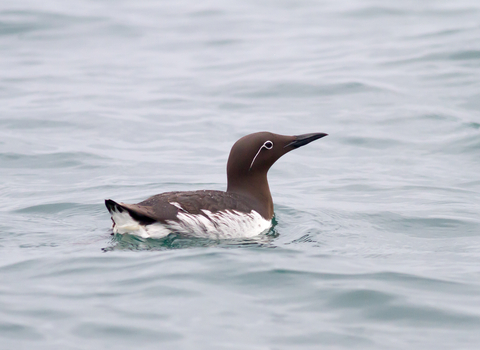
Common guillemots ©Mike Snelle

(Bridled) common guillemot ©Mike Snelle

Guillemot (winter-plumage) ©Tom Hibbert
Guillemot
Guillemots really know how to live life on the edge – quite literally! They nest tightly packed on steep ledges and cliffs around the coast. This may sound like a strange nesting spot, but it keeps them safe from predators. Thankfully these birds aren’t afraid of a little cliff diving – at three weeks old, guillemot chicks jump off the cliff into the sea!
